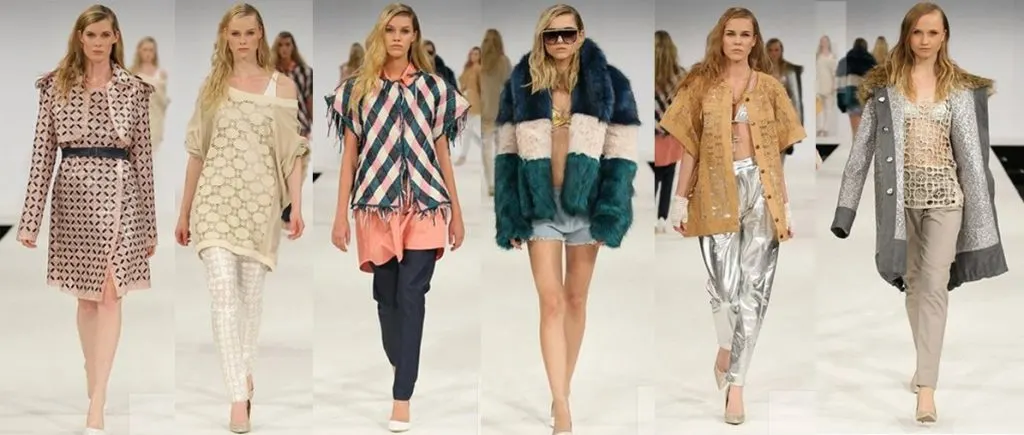I’m one of those people who gets annoyed having to make a toile for my sewing projects. And yet, as someone teaching others how to make their own clothes, and a designer too, I do always say that it is important to make a toile before you cut your main fabric.
The reason for this is that often we have spent a tidy sum of cash on a fabric we love – and if we were to cut out a sewing pattern that we hadn’t made a toile for, we could very well end up throwing that gorgeous fabric away.
First things first though, let’s clear up one thing many people ask:
How Do You Pronounce Toile?
The word ‘toile’ is pronounced like t-wah-l. Think of it with a French accent when you say moi (me). That ‘wah’ sound in ‘moi’ is the same sound you’re aiming for in toile.
T – wah – l
What Is A Toile And What Are Toiles Made Of?
A toile is a replica of a garment that you intend to sew, like a test garment, but it is made in a lower priced fabric which has a similar weight and drape to your intended final fabric.
This is true whether the sample garment or toile is made from woven fabrics or knit fabrics, but usually woven toiles are sewn in a simple fabric called calico or muslin, and your knit garments would be toiled in a similar weight jersey.
Is Muslin The Same As Calico?
Not at all. The differences in muslin and calico are quite distinct actually!
- Muslin is a very light woven cotton fabric, with quite a lot of drape to it because of its fine plain weave
- Calico is a very tightly woven cotton fabric available in slightly different weights and colours; usually cream and unbleached.
Your deciding factor when toiling a woven sample garment is the fabric weight needed to make a toile.
Why Would You Make a Toile?
Reasons for making a toile are two-fold.
Firstly, as mentioned earlier, when you make a toile you would usually use a similar weight, but less expensive, fabric. This allows you to make up the toile in a cheaper, money saving way.
Secondly, when you create a toile or muslin, you are able to test the garment for the followings:
- Fit
- Proportion
- Size
- Scale
Toiling For Fit
Creating a toile for fit is the single most important reason for making a toile or muslin. When you go to all the effort of making your own clothes, you really do want to get the fit as close to perfect as possible right? And this is easily achieved when you took first, and transfer changed needed to the sewing pattern before recutting and sewing.
Toiling For Size
Size is important, and while the finished garment measurements on sewing patterns are usually really accurate, you might decide that a different size is more suitable than the one you’re guided to use by the pattern instructions. In this case, you would definitely want to toile for size, to make sure it is correct.
Toiling For Proportion
When you sew a garment that is designed and intended to be worn by someone who is 5’8″ and you are 5’2″, there will be a discrepancy in the proportions for your body length. Creating a toile will help you see whether the proportions of the sewing pattern are right for your body proportions, and whether any changes need to be made.
In addition, when you have other elements, such as pockets or sleeves, you want to make sure those elements are in good proportion to other parts of the garment. You can learn more about this in my fashion design principles article.
I also have this fab post on body proportions that will help you better understand how your body proportions can affect the outcome of sewing patterns.
Toiling For Scale
Scale is different to size and proportions (as explained in my Fashion Design Principles article) in that a pocket that is ‘one size’ will look very different on a garment sewn at size 10 and size 20. This is down to scale.
When you sew a toile or muslin to check scale of different elements, you’re more likely to have a well considered garment at the end, because you’ll ‘see’ if something looks ‘off’ early on.
How Do You Make A Muslin?

So, if someone using the phrase ‘make a muslin’ they are not referring to using the fabric called muslin, but in fact the technique of creating a test garment.
Making a muslin (or toile) is as easy as taking the sewing pattern you intend to make (or the pattern your have drafted yourself) and cutting it in a simple toiling fabric – in this case, muslin or calico.
You would then baste the sections together using a longer stitch length, so that if modifications are needed, the stitches can easily be snipped and re-sewn.
When the fit is right, you make the changes to your commercial sewing pattern and then cut and sew the garment in your chosen fabric.
How Are Toiles Used To Develop Products?
Toiles are used in the fashion industry to create sample garments and develop the collections they’re offering to buyers. It is part of the design process in many fashion design studios.

I have sometimes created as many as 10 toiled for one design when working on collections. This could be because there’s an issue with proportions. or that a pattern making or draping technique hasn’t quite worked and needs resolving. The process of getting the end result – a well designed and great fitting garment – can take as many toiles as it needs, but I try to do this very sustainably, using old calico from previous toiles where possible.
The Toile Process In Fashion Design
For anyone interested in how the process works when designing fashion, here’s a quick look:
- Collection research
- Moodboard
- Fabric board
- Sketchbook work
- 2D and 3D development
- Pattern cutting
- Toiling
- Fitting
- Further 3D development (modifying patterns, testing new ideas etc)
- Further fittings
- More 3D development
- Shell development
- Further fittings
- Final patterns
- Garment construction
Steps seven through fourteen are key points at which toiles / muslins are created for the purpose of fit, size, scale and proportion.
I hope this has been informative – if you have any questions about what a toile is, or how to create your own, let me know in the comments below!
You Might Also Like:


Maggie
Friday 19th of July 2024
There is another name for a toile garment...and it not a mock-up or try-out. My grandmother had another name for it. Do you know?
Eve Tokens
Saturday 20th of July 2024
Hi Maggie! The only terms I am familiar with are toile, muslin, mock up and prototype! I would LOVE to know what your grandmother called it!
Paula Larue Duke
Thursday 2nd of February 2023
Does anyone use the toile as the finished pattern to place on the chosen material to cut by? Why transfer adjustments to the original pattern to be cut out when you can cut the toile made and use those corrected pieces as the final pattern.
Eve Tokens
Saturday 4th of February 2023
Hi Paula! Absolutely this does happen, more so for one of a kind / custom pieces. But if it's transferred to paper you have a proper hard copy for future reference / use. A pattern made from fabric comes with all the pitfalls of fabric - it can distort, become off grain etc, and transferring those errors to fabric will result in errors in the garment. I personally prefer to have all patterns transferred to paper so that I have something to refer back to at all times, in case something doesn't work out...